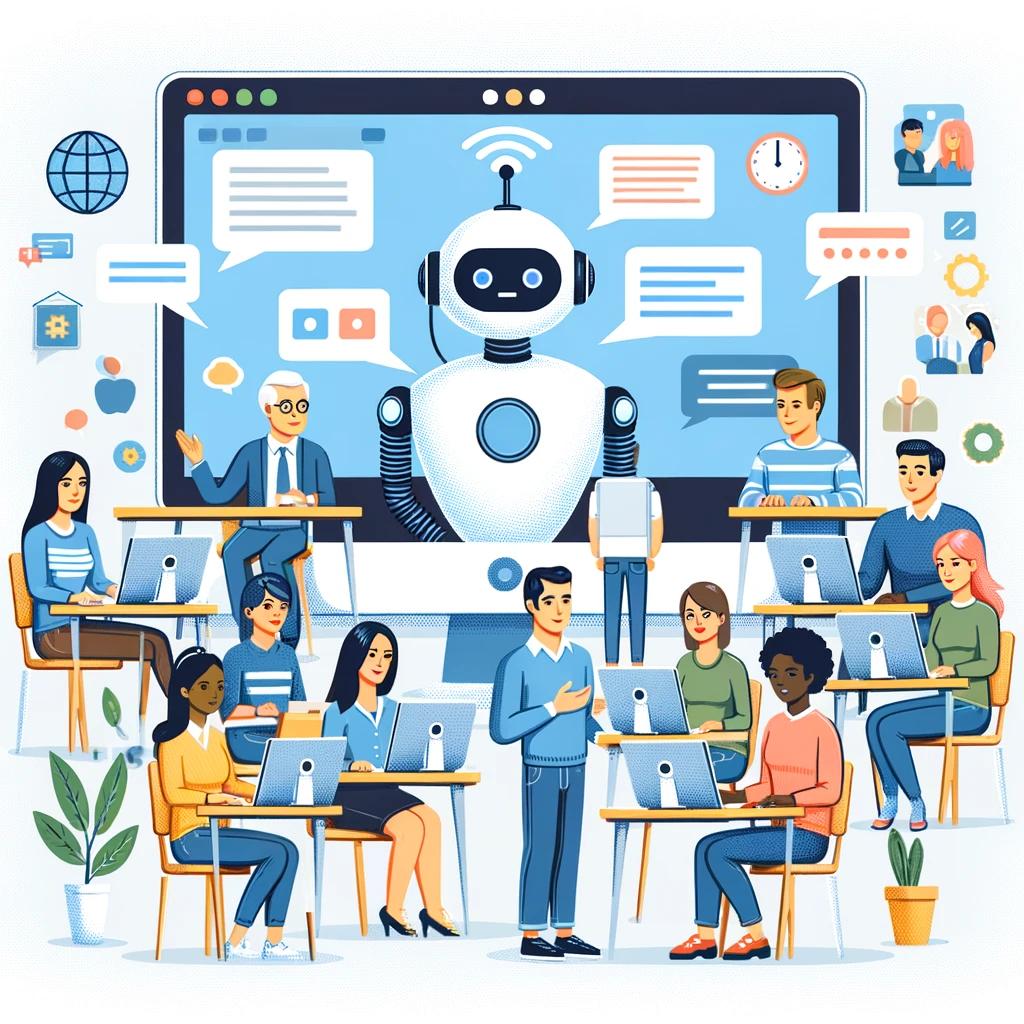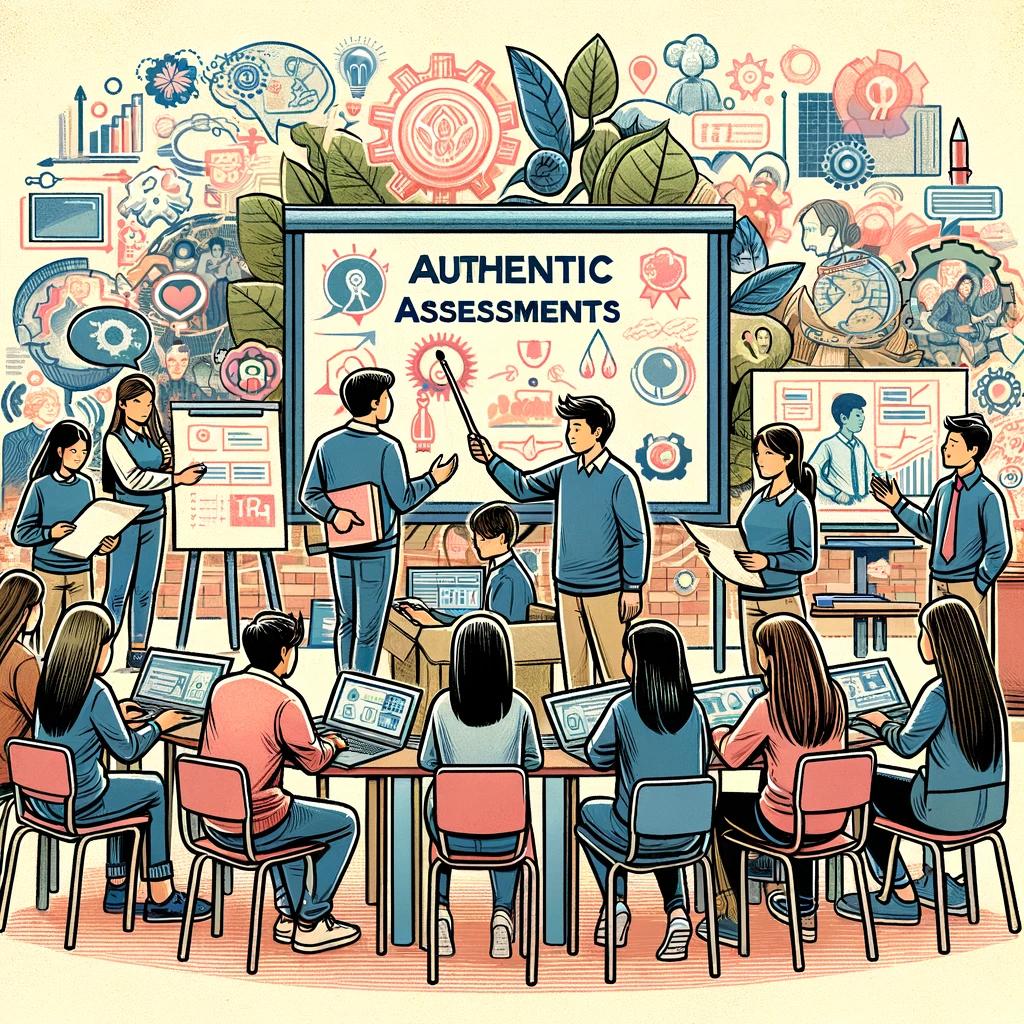
The use of artificial intelligence (AI) in the orientation programme for recent immigrants offers a great chance to transform the educational experience, particularly when combined with a hybrid learning approach. This article uses the ADDIE (Analysis, Design, Development, Implementation, Evaluation) model framework to examine the ways that artificial intelligence (AI) might be applied to improve teaching, learning, and administrative efficiency. In the era of artificial intelligence, it also tackles the growing problem of academic integrity and offers safeguards against its improper application in the classroom. Let’s examine how AI can be used within the ADDIE model.
Phases of Analysis and Design: AI’s involvement starts in the Analysis phase, where it can process data from surveys and assessments to automate the evaluation of immigrants’ learning needs. This helps identify common issues and areas that require attention, like language proficiency or cultural adaptation (Khan & Bose, 2021). According to du Boulay (2016), artificial intelligence (AI) enables the development of personalised learning paths and adaptable content during the design phase. This ensures that the materials are customised to the learners’ pace and style, thereby meeting the different demands of adult learners.
Phase of Development: Artificial Intelligence facilitates the creation and curation of content by utilising technologies for natural language generation to effectively generate and suggest pertinent multimedia material. Additionally, it can create helpful language tools that will help immigrants overcome language hurdles by providing real-time translation and pronunciation coaching (Chen, Chen, & Lin, 2020).
Phase of Implementation: AI-powered chatbots act as on-demand tutors, offering prompt assistance and feedback to improve the learning process outside conventional classroom settings. Furthermore, AI can automate administrative processes like enrolment and progress monitoring, freeing teachers to concentrate more on instruction rather than paperwork (Goksel & Bozkurt, 2019).
Evaluation Phase: AI systems enable a continuously developing learning experience that is customised to each learner’s needs by providing a nuanced understanding of each learner’s success and areas for development through adaptive assessments and feedback analysis (Perrotta & Selwyn, 2019).
Addressing Academic Integrity and Misuse of AI
The development of AI tools has made it harder to uphold academic integrity. Couros (2024) in his presentation argues that AI has failed to accurately identify the use of generative AI in academics. It is crucial to create examinations that demand personal reflection, live presentations, and practical application—tasks that are difficult for AI to imitate—to prevent potential abuse. Maintaining assessment integrity can be aided by using AI for plagiarism monitoring and detection. Additionally, integrating ethical AI use and digital literacy into the curriculum guarantees that students understand the possibilities as well as constraints of AI (Good, 1987).
Instead of focusing on limiting the use of AI, why don’t academics and institutions think in terms of “How do we make AI a relevant part of the instructional process that augments student learning?” Educators either accept AI as a disruptor or as a catalyst.
To conclude, Artificial Intelligence (AI) in education presents opportunities for tailored, effective, and interesting learning, especially in courses for recent immigrants. Teachers can construct a dynamic learning environment that addresses the different needs of adult learners by utilising AI across the stages of the ADDIE paradigm. But it’s also critical to address the issues raised by AI, particularly concerning upholding academic integrity, by encouraging the ethical application of AI and creating well-thought-out course designs.
Although there are obstacles in the way of educators and course designers when incorporating AI into their curricula, the potential benefits in terms of improved learning outcomes and increased operational efficiency are enormous. AI applications in education are expected to develop along with the sector, offering more personalised, engaging, and accessible learning experiences in the future.
When I took a course with Alec we spent a lot of time discussing the challenges of utlizing AI in a classroom setting. One thing that came up quite a lot was the inherent bias in traning data. Essentially, many AI algorithms have been fed data that is culturally biased, from a colonialist perspective, written in a way that doesn’t represent minoritized people, etc. In turn we cannot be surprised when the results AI produces reflect these perspectives (or excludes certain voices). While I agree that AI has incredible potential to help teachers create materials I think we need to be more vigiliant than ever about how these tools are guiding our instruction. It’s funny to think 20 years ago I only had to worry about who was writing my textbooks!
Thanks Matt. I had the “inherent bias” experience while generating the images used in this post. It did not generate a picture of a black teacher if I don’t specify. I tried it a couple of times.
I appreciate your insightful post. As someone who is new to AI, I wonder if you have ever used AI to assist you with course development/delivery?
Thanks. I have tried it. I learnt that platforms like ChatGPT need to be trained for your context to get better results. For example, specifying the challenges of some students, anticipated limitations, the tools/platforms available to you etc. will allow the platform to generate a lesson. Interestingly, you can get multiple results within a short timeframe resulting in options which you could adapt to your plan. Being experienced, you can quickly imagine and contextualise the suggestions.
I once asked ChatGPT to generate multiple-choice questions from a passage but changed some options when I reviewed it. Some LMSs allow for autogenerated questions, AI right? AI-powered LMSs are increasing and they include content and learning informatics.